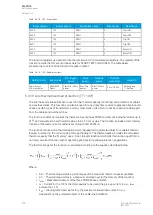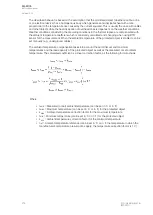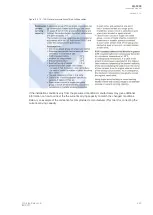
The described behavior is based on the assumption that the monitored object (whether a cable, a line
or an electrical device) has a homogenous body which generates and dissipates heat with a rate
proportional to the temperature rise caused by the current squared. This is usually the case with cables
and other objects while the heat dissipation of overhead lines is dependent on the weather conditions.
Weather conditions considering the prevailing conditions in the thermal replica are compensated with
the ambient temperature coefficient which is constantly calculated and changing when using RTD
sensor for the measurement. When the ambient temperature of the protected object is stable it can be
set manually (e.g. underground cables).
The ambient temperature compensation takes into account the set minimum and maximum
temperatures and the load capacity of the protected object as well as the measured or set ambient
temperature. The calculated coefficient is a linear correction factor, as the following formula shows:
Where:
• t
amb
= Measured (or set) ambient temperature (can be set in
̊
C or in
̊
F)
• t
max
= Maximum temperature (can be set in
̊
C or in
̊
F) for the protected object
• k
max
= Ambient temperature correction factor for the maximum temperature
• t
min
= Minimum temperature (can be set in
̊
C or in
̊
F) for the protected object
• k
min
= Ambient temperature correction factor for the minimum temperature
• t
ref
= Ambient temperature reference (can be set in
̊
C or in
̊
F, the temperature in which the
manufacturer's temperature presumptions apply, the temperature correction factor is 1.0)
A
AQ
Q-F205
-F205
Instruction manual
Version: 2.04
218
© Arcteq Relays Ltd
IM00013
Summary of Contents for AQ F205
Page 1: ...AQ F205 Feeder protection IED Instruction manual ...
Page 2: ......






































